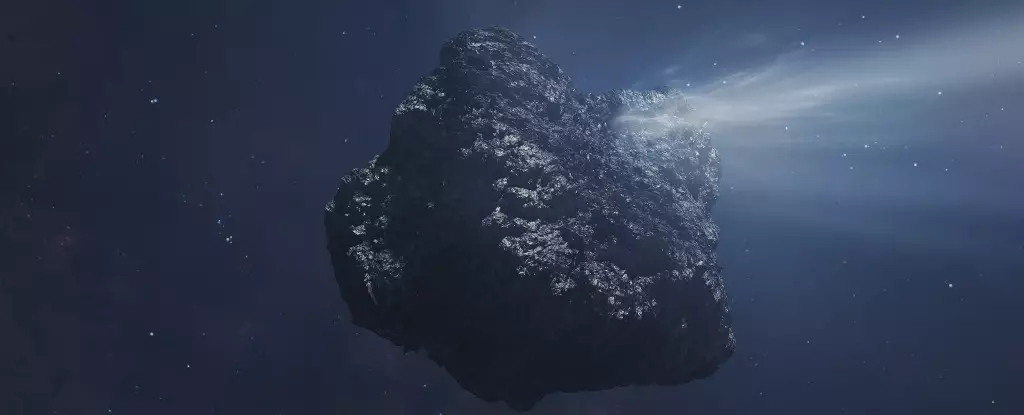Prepare yourself for a cosmic spectacle of unfathomable proportions because the monstrous Comet C/2014 UN271, known by its less poetic moniker, Bernardinelli-Bernstein, is approaching our Solar System like a celestial freight train. With a span of 137 kilometers (85 miles), this ice-coated titan dwarfs previous record-holders. In fact, it is nearly 14 times larger than the asteroid believed to have caused the extinction of the dinosaurs. Astounding, yet apocalyptic, this discovery brings forth an unsettling reminder of humanity’s vulnerability in an expansive universe.
While scientists cautiously assure us that UN271 will not venture closer than Saturn’s orbit at its nearest approach on January 29, 2031, the very idea of a gargantuan ice ball careening through the void is enough to make anyone pause. This isn’t merely a rock from outer space; it’s a massive structure emanating clouds of carbon monoxide as it approaches, giving rise to new queries about what lies ahead in its journey through the inner Solar System.
Astrochemistry and the Unraveling Mysteries
Observations conducted with state-of-the-art equipment like the Atacama Large Millimeter/submillimeter Array (ALMA) in Chile have unveiled the otherworldly secrets of this comet. According to astrochemist Nathan Roth, insights gleaned from this discovery raise critical questions about the comet’s mechanisms and evolution. It’s almost as if we are being invited to witness a living, breathing entity, one that intimately connects us to the unfathomably complex processes of our cosmos.
The observations on March 8 and 17, 2024, revealed remarkable jets of gas escaping the comet’s nucleus, primarily composed of carbon monoxide. This is not just science fiction; it’s the unraveling of cosmic biology—an understanding of how a celestial object with such immense size and mystery operates. The brief elation of spotting two jets on March 8 devolved to a singular stream by March 17, showcasing a dynamic, shifting landscape that is devastating and awe-inspiring simultaneously.
The Threat That Lurks in the Shadows
While the scientific community is rightly excited about the insights afforded by studying such a monstrous object, let’s not kid ourselves—there’s a darker undercurrent to this spectacle. It’s easy to marvel at the beauty of cosmic phenomena, but the reality is that comets have historically changed life on Earth in profound and unsettling ways. The potential for geo-catastrophe lurks in the shadows, as these ice-laden giants have the capacity to reshape our planet’s surface with catastrophic consequences.
While we await the comet’s closest approach, we can’t ignore history. Our planet is a time capsule of past impact events that have ended civilizations, altered climates, and set the stage for the rise of new species. Therefore, the excitement should be tempered with caution and awareness. Ignoring the potential hazards posed by celestial bodies is a gamble we can no longer afford to take.
The Spectacle from a Safe Distance
It’s worth noting that, despite its tremendous size and energy, UN271 will remain an awe-inspiring sight mostly through telescopes. The comet will not be bright enough to grace our night sky in a manner that allows direct visual observation from Earth. Yet, this lack of visual presence does not diminish its grandeur; it amplifies our desire to engage with the cosmos, even within established boundaries. It propels our quest for understanding and the need to appreciate the sublime nature of the universe, complete with all its capricious whims.
This comet acts as a reminder of our smallness and fragility, while simultaneously igniting curiosity about what else lies in the vast expanse of space. It begs for a community approach—a collective effort to advance our understanding of not just this comet, but numerous other celestial bodies that evade our gaze yet play an integral role in the great cosmic tapestry.
As we anticipate Comet C/2014 UN271’s arrival, we must balance excitement with an understanding of the perilous potential that accompanies such an astronomical encounter. The study of this colossal entity will undoubtedly yield transformational insights into the workings of our Solar System, but it also prompts us to confront the impermanence of existence amidst the celestial wonders that grace our sky.

